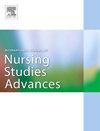评估巴西版数字健康素养工具对心力衰竭患者的心理测量特性
IF 3.1
Q1 NURSING
International Journal of Nursing Studies Advances
Pub Date : 2025-07-30
DOI:10.1016/j.ijnsa.2025.100391
引用次数: 0
摘要
数字健康素养是心力衰竭自我护理的关键技能,应该通过有效和可靠的工具进行评估。目的评价巴西版数字健康素养量表在心力衰竭患者中的心理测量特性。设计一项心理测量研究,分析内部结构的效度和信度。参与者是在巴西圣保罗一家公立医院的心肌病门诊招募的。参与者:使用互联网的心力衰竭门诊患者。方法对127例个体进行实验,自举500例。通过探索性因子分析和验证性因子分析评估内部结构效度和信度。通过并行分析确定维度,数据提取采用稳健的MORGANA因子分析。抽样充分性测量和Kaiser-Meyer-Olkin检验的值应该接近1,Bartlett检验的p <; 0.05。目标解释方差约为60%,因子负荷>;0.3,社区>;0.4。拟合指数(比较拟合指数、Tucker-Lewis指数和拟合优度指数)应近似为1,近似均方根误差应为0.05-0.08。可靠性是用序数α和麦当劳ω (>0.9)来衡量的。结果形成了一个单维模型。由于因子负荷<;0.2, Heywood案例,过量残留和双重饱和,删除了五个项目。最终的16项模型的Kaiser-Meyer-Olkin = 0.86, Measure of Sampling Adequacy & 0.75,解释方差= 59%,因子负荷0.53-0.86,社区0.28-0.74。信度高(alpha= 0.94, omega= 0.95)。调整后的模型比较拟合指数= 0.99,Tucker-Lewis指数= 0.99,拟合优度指数= 0.98,近似均方根误差= 0.07。结论巴西版数字健康素养工具对心力衰竭患者表现出较强的内部结构效度和可靠性,支持其在研究和临床实践中的应用。本文章由计算机程序翻译,如有差异,请以英文原文为准。
Evaluation of the psychometric properties of the Brazilian version of the Digital Health Literacy Instrument for individuals with heart failure
Background
Digital health literacy is a critical skill for heart failure self-care, which should be assessed through valid and reliable instruments.
Objective
To evaluate the psychometric properties of the Brazilian version of the Digital Health Literacy Instrument in individuals with heart failure.
Design
A psychometric study analyzing internal structure validity and reliability.
Settings
The participants were recruited at the cardiomyopathy outpatient clinic of a public hospital in São Paulo, Brazil.
Participants
Outpatients with heart failure who used the internet.
Methods
The instrument was administered to 127 individuals, with bootstrapping to 500. Internal structure validity and reliability were assessed through Exploratory and Confirmatory Factor Analyses. Dimensionality was determined via Parallel Analysis, and data extraction employed Robust MORGANA factor analysis. Measure of Sampling Adequacy and Kaiser-Meyer-Olkin were expected to be close to 1 and Bartlett’s test should have p < 0.05. Target explained variance was approximately 60 %, with factor loadings >0.3 and communalities >0.4. Fit indices (Comparative Fit Index, Tucker-Lewis Index and Goodness of Fit Index) should be approximately 1 and Root Mean Square Error of Approximation should be 0.05–0.08. Reliability was measured using ordinal alpha and McDonald’s omega (>0.9).
Results
A unidimensional model emerged. Five items were removed due to factor loadings <0.2, Heywood case, excessive residuals, and double saturation. The final 16-item model had Kaiser-Meyer-Olkin = 0.86, Measure of Sampling Adequacy >0.75, explained variance = 59 %, factor loadings 0.53–0.86, and communalities 0.28–0.74. Reliability was high (alpha= 0.94, omega= 0.95). The adjusted model showed Comparative Fit Index = 0.99, Tucker-Lewis Index = 0.99 and Goodness of Fit Index = 0.98 and Root Mean Square Error of Approximation = 0.07.
Conclusions
The Brazilian version of the Digital Health Literacy Instrument demonstrated strong internal structure validity and reliability for individuals with heart failure, supporting its use in research and clinical practice.
求助全文
通过发布文献求助,成功后即可免费获取论文全文。
去求助
来源期刊

International Journal of Nursing Studies Advances
Nursing-General Nursing
CiteScore
5.80
自引率
0.00%
发文量
45
审稿时长
81 days
 求助内容:
求助内容: 应助结果提醒方式:
应助结果提醒方式:


